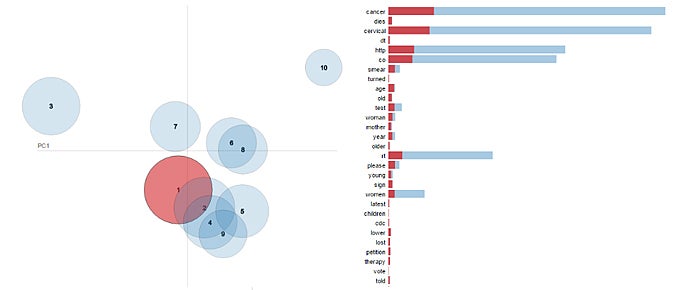Cervical Cancer Prevention with Twitter

Publications
Research Summary
This project seeks to understand the discussion of HPV vaccination and cervical cancer on social media. Cervical cancer causes 4,220 annual deaths. 17% women do not receive appropriate Pap smear screening. Only 35% of girls 13 to 17 fully receive HPV vaccine. Unfortunately physician based recommendation approaches miss many women. However, social media is used extensively – especially by young women. Using a mixed methods approach combining machine learning, qualitative analysis, and experimental manipulations, we analyze Twitter discussion to determine how social media messages can most effectively be used to promote HPV vaccination and cervical cancer screenings. Machine learning techniques will be used to identify and rank characteristic of cervical cancer screening and HPV vaccination in social media messages. Qualitative research will be used to categorize and validate the range of cervical cancer screening and HPV vaccination discussion on social media. Finally, we will validate the machine learning and qualitative results by creating social cervical cancer screening and HPV vaccination messages and tracking their spread in online networks. In addition to message content, we will also examine the effect of network based factors on message success such as network structure and whether the message originated from a peer or an expert.

Awards
- 2019 Top Paper Award in Health Communication, International Communication Association
Funding
This research is supported by under National Cancer Institute of the National Institutes of Health R01 Award 1R01CA178875, granted to Co-PI’s Damon Centola and Urmimala Sarkar. The content is solely the responsibility of the authors and does not necessarily represent the official views of the National Institutes of Health.
